Ian Thomson at The Spectator:
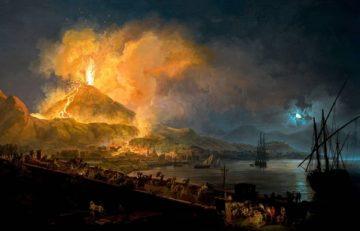 Naples, the tatterdemalion capital of the Italian south, is said to be awash with heroin. Chinese-run morphine refineries on its outskirts masquerade as ‘legitimate’ couture operations that transform bolts of Chinese silk into contraband Dolce & Gabbana or Versace. The textile sweatshops are controlled by the Neapolitan mafia, or Camorra. All this was exposed by the Italian journalist Roberto Saviano in his scorching reportage, Gomorrah. Published in Italy in 2006, Saviano’s was nevertheless a partial account, in which the carnival city of mandolins and ‘O Sole Mio’ was overrun by Armani-coutured killer-capitalists.
Naples, the tatterdemalion capital of the Italian south, is said to be awash with heroin. Chinese-run morphine refineries on its outskirts masquerade as ‘legitimate’ couture operations that transform bolts of Chinese silk into contraband Dolce & Gabbana or Versace. The textile sweatshops are controlled by the Neapolitan mafia, or Camorra. All this was exposed by the Italian journalist Roberto Saviano in his scorching reportage, Gomorrah. Published in Italy in 2006, Saviano’s was nevertheless a partial account, in which the carnival city of mandolins and ‘O Sole Mio’ was overrun by Armani-coutured killer-capitalists.
Marius Kociejowski, poet, essayist and travel writer, is alert to the city’s reputation for Camorra and pickpocketing crime. ‘There is no getting around the fact that Naples is a bit of a shambles,’ he writes.
more here.

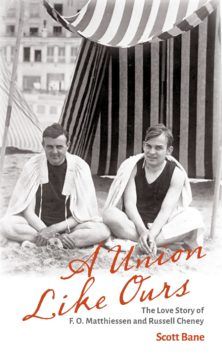 American Renaissance: Art and Expression in the Age of Emerson and Whitman
American Renaissance: Art and Expression in the Age of Emerson and Whitman It is 1919, and a young astronomer turns a street corner in Pasadena, California. Something seemingly humdrum on the ground distracts him. It’s an ant heap. Dropping to his knees, peering closer, he has an epiphany – about deep time, our place within it, and humanity’s uncertain fate.
It is 1919, and a young astronomer turns a street corner in Pasadena, California. Something seemingly humdrum on the ground distracts him. It’s an ant heap. Dropping to his knees, peering closer, he has an epiphany – about deep time, our place within it, and humanity’s uncertain fate.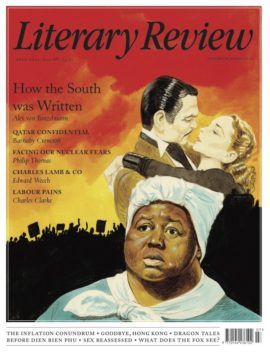 T
T Why, from the get-go, did Nixon do the very thing that could bring him down? Why didn’t he condemn the burglary, claim he knew nothing about it (which was factually true), and fire those responsible? He had the nation on his side. He had worked well with Congress. He was odds-on favourite to win a second term. With Henry Kissinger, he had set a foreign policy agenda of unprecedented ambition: that February, he’d been the first US president to visit the People’s Republic of China and in May he was the first president to set foot in Moscow. Vietnam notwithstanding, he had created a legacy of international success that he believed would make him one of history’s great peacemakers. He had much to lose.
Why, from the get-go, did Nixon do the very thing that could bring him down? Why didn’t he condemn the burglary, claim he knew nothing about it (which was factually true), and fire those responsible? He had the nation on his side. He had worked well with Congress. He was odds-on favourite to win a second term. With Henry Kissinger, he had set a foreign policy agenda of unprecedented ambition: that February, he’d been the first US president to visit the People’s Republic of China and in May he was the first president to set foot in Moscow. Vietnam notwithstanding, he had created a legacy of international success that he believed would make him one of history’s great peacemakers. He had much to lose.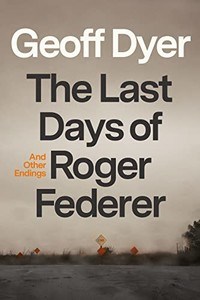 ASAD RAZA: Your new book, The Last Days of Roger Federer (Farrar, Straus and Giroux, $28), is in part a meditation on the tennis great and his retirement. It’s also about the late careers of other athletes, writers, artists, and musicians—Bob Dylan, Eve Babitz, Beethoven, to name a few. In this sense, you are writing about time, and this is reflected in the book’s unique formal structure. Can you tell me how that came about?
ASAD RAZA: Your new book, The Last Days of Roger Federer (Farrar, Straus and Giroux, $28), is in part a meditation on the tennis great and his retirement. It’s also about the late careers of other athletes, writers, artists, and musicians—Bob Dylan, Eve Babitz, Beethoven, to name a few. In this sense, you are writing about time, and this is reflected in the book’s unique formal structure. Can you tell me how that came about?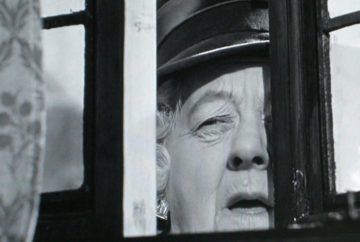 Unlike Agatha Christie’s best known novels, At Bertram’s Hotel (1965) barely has a plot. Its one murder takes place almost three-quarters of the way through the book, and it is solved more through intuition than detection. Though Miss Marple is present, she has little to do beyond eating muffins and shopping for tea towels—or, as she calls them, “glass cloths.”
Unlike Agatha Christie’s best known novels, At Bertram’s Hotel (1965) barely has a plot. Its one murder takes place almost three-quarters of the way through the book, and it is solved more through intuition than detection. Though Miss Marple is present, she has little to do beyond eating muffins and shopping for tea towels—or, as she calls them, “glass cloths.” Clearly, to conclude that we will be able to achieve decarbonization anytime soon, effectively, and on the required scale runs against all past evidence.
Clearly, to conclude that we will be able to achieve decarbonization anytime soon, effectively, and on the required scale runs against all past evidence. The violence of the irony: Those Supreme Court justices hand-picked by Mitch McConnell’s dark-money donors oversaw the evisceration of Roe v. Wade only days after
The violence of the irony: Those Supreme Court justices hand-picked by Mitch McConnell’s dark-money donors oversaw the evisceration of Roe v. Wade only days after 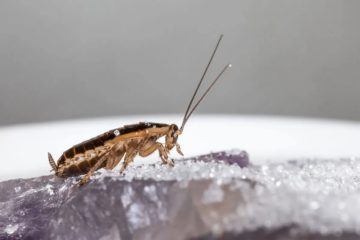 Apparently, humans aren’t the only animals going
Apparently, humans aren’t the only animals going  New research by a scientist at the Milner Center for Evolution at the University of Bath suggests that “selfish chromosomes” explain why most human embryos die very early on. The study, published in PLoS Biology, explaining why fish embryos are fine but sadly humans’ embryos often don’t survive, has implications for the treatment of infertility.
New research by a scientist at the Milner Center for Evolution at the University of Bath suggests that “selfish chromosomes” explain why most human embryos die very early on. The study, published in PLoS Biology, explaining why fish embryos are fine but sadly humans’ embryos often don’t survive, has implications for the treatment of infertility.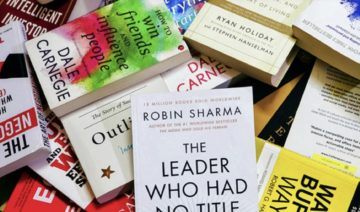 When the New York Times reviewed Charles Duhigg’s 2012 book The Power of Habit, it defined a new kind of guide to the self. Duhigg’s book was “not a self-help book conveying one author’s homespun remedies, but a serious look at the science of habit formation and change.” No longer would self-improvement be the stuff of drugstore book racks. Now it would be rooted in science and make serious claims as a manual for life. The Science of Habit popularized a great deal of cutting-edge research on behavior change, but its scientific framework also made a pitch for the attention of highly educated, tech-savvy young members of the professional class.
When the New York Times reviewed Charles Duhigg’s 2012 book The Power of Habit, it defined a new kind of guide to the self. Duhigg’s book was “not a self-help book conveying one author’s homespun remedies, but a serious look at the science of habit formation and change.” No longer would self-improvement be the stuff of drugstore book racks. Now it would be rooted in science and make serious claims as a manual for life. The Science of Habit popularized a great deal of cutting-edge research on behavior change, but its scientific framework also made a pitch for the attention of highly educated, tech-savvy young members of the professional class.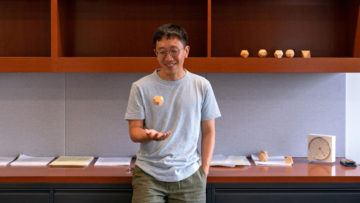 June Huh often finds himself lost. Every afternoon, he takes a long walk around Princeton University, where he’s a professor in the mathematics department. On this particular day in mid-May, he’s making his way through the woods around the nearby Institute for Advanced Study — “Just so you know,” he says as he considers a fork in the path ahead, “I don’t know where we are” — pausing every so often to point out the subtle movements of wildlife hiding beneath leaves or behind trees. Among the animals he spots over the next two hours of wandering are a pair of frogs, a red-crested bird, a turtle the size of a thimble, and a quick-footed fox, each given its own quiet moment of observation.
June Huh often finds himself lost. Every afternoon, he takes a long walk around Princeton University, where he’s a professor in the mathematics department. On this particular day in mid-May, he’s making his way through the woods around the nearby Institute for Advanced Study — “Just so you know,” he says as he considers a fork in the path ahead, “I don’t know where we are” — pausing every so often to point out the subtle movements of wildlife hiding beneath leaves or behind trees. Among the animals he spots over the next two hours of wandering are a pair of frogs, a red-crested bird, a turtle the size of a thimble, and a quick-footed fox, each given its own quiet moment of observation. Right now, it feels as though American politics is like a simple puzzle consisting of five pieces. While each piece of the puzzle has been widely discussed, it is easy to miss how they all fit together. But once you put the pieces together, the picture that emerges is very bleak.
Right now, it feels as though American politics is like a simple puzzle consisting of five pieces. While each piece of the puzzle has been widely discussed, it is easy to miss how they all fit together. But once you put the pieces together, the picture that emerges is very bleak.